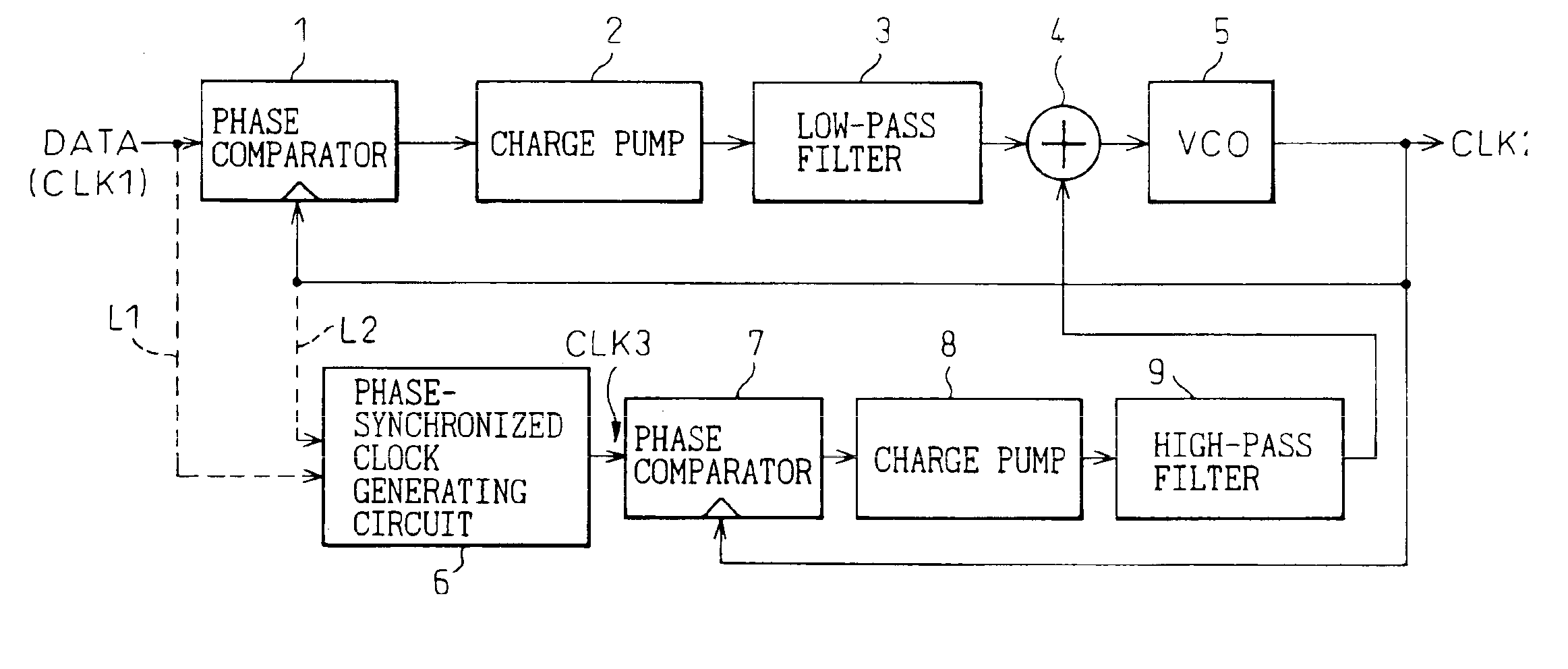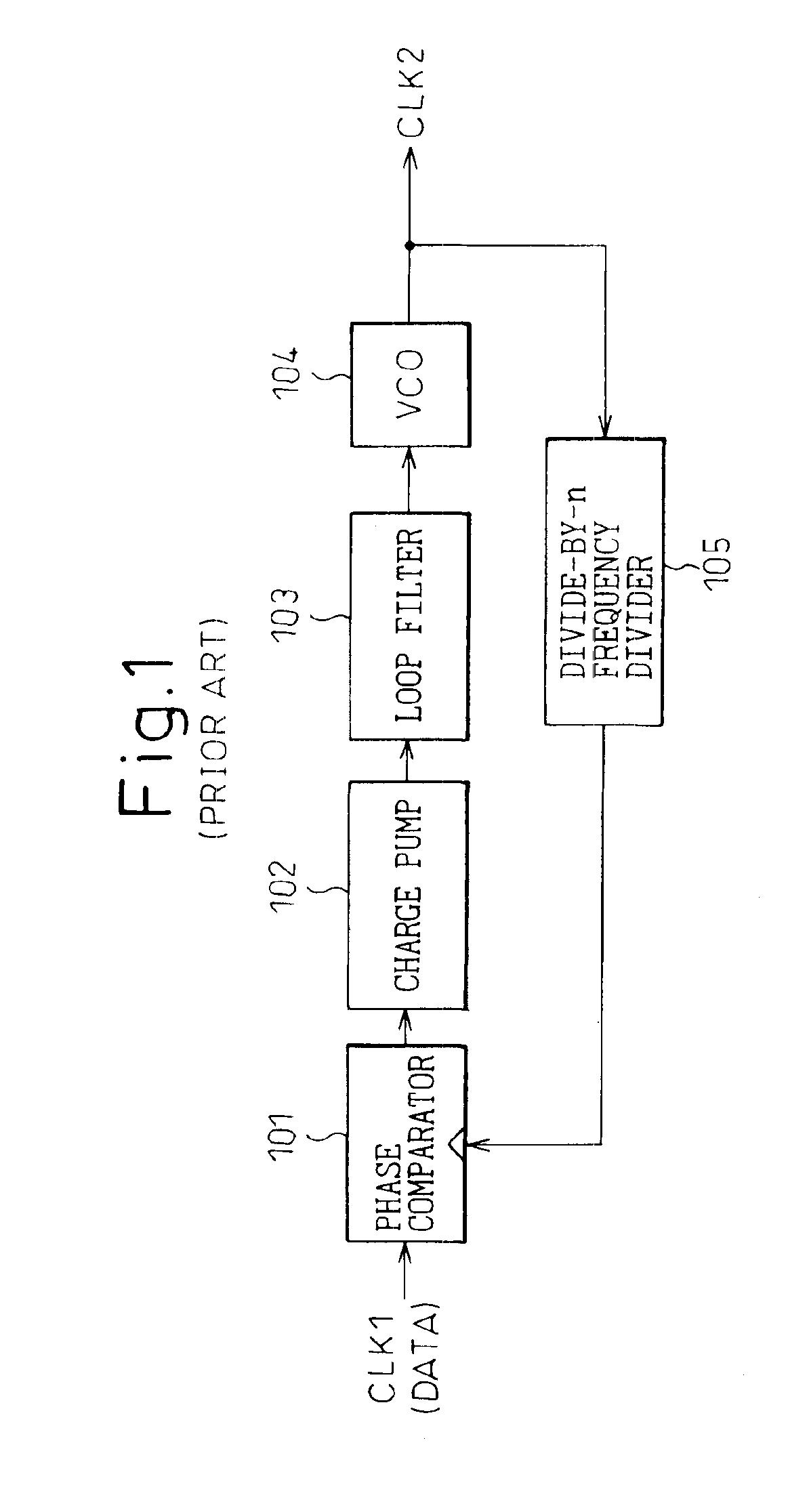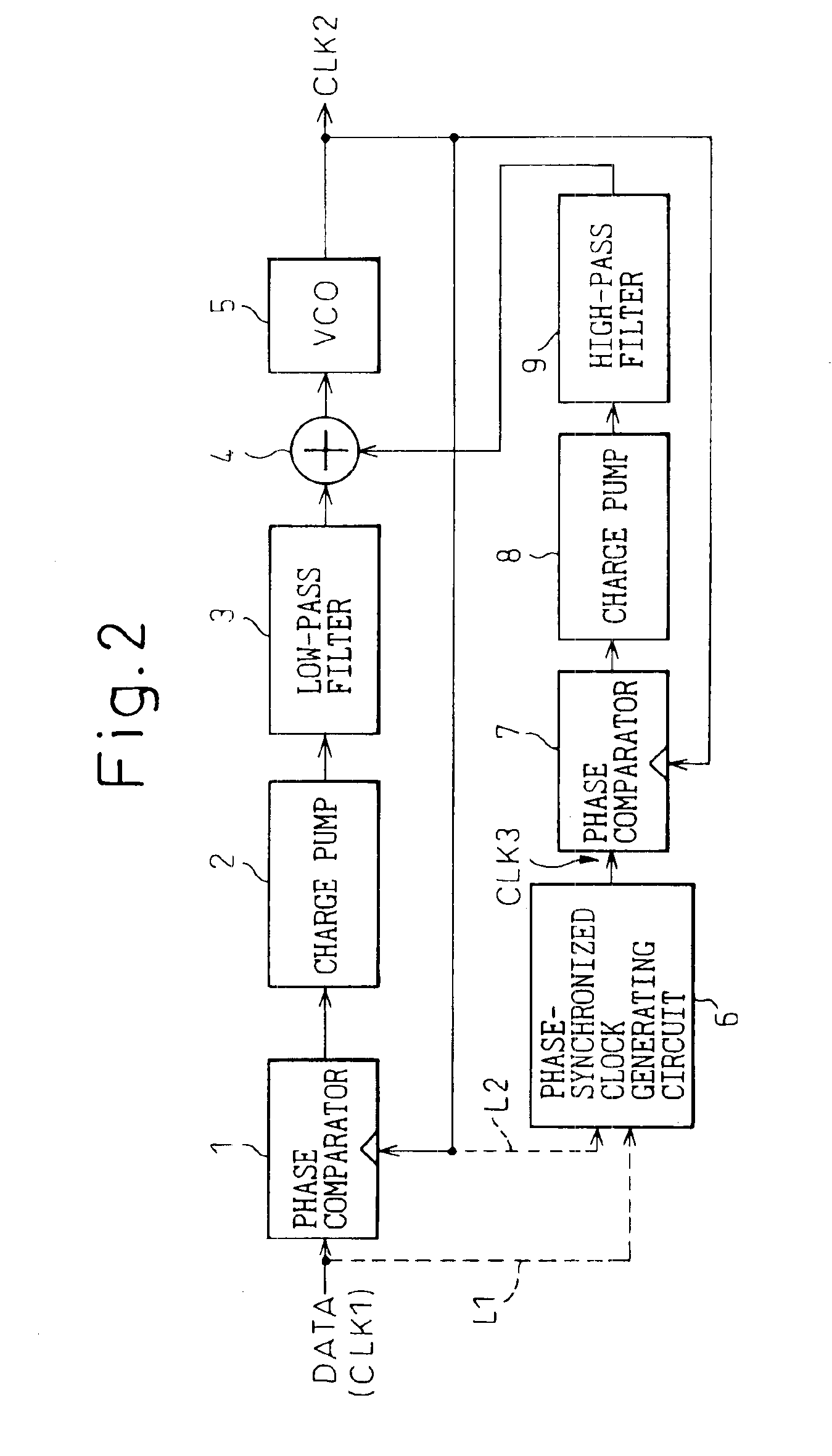Clock generator for generating accurate and low-jitter clock
a clock generator and clock technology, applied in the field of clocks, can solve the problems of affecting the performance of the chip, the speed gap is becoming a bottleneck limiting the performance improvement of the computer as a whole, and the speed of signal transmission between elements or circuit blocks within the chip is becoming a major factor limiting the chip performance, etc., to achieve the effect of generating an accurate, low jitter clock
- Summary
- Abstract
- Description
- Claims
- Application Information
AI Technical Summary
Benefits of technology
Problems solved by technology
Method used
Image
Examples
first embodiment
[0048]FIG. 3 is a block diagram showing the clock generator according to the present invention. In FIG. 3, reference numerals 1 and 7 are phase comparators, 2 and 8 are charge pumps, 4 is an adder, 5 is a VCO (Voltage Controlled Oscillator), 6 is a multiply-by-2 circuit (phase-synchronized clock generating circuit), 9 is a high-pass filter, 10 is a processing circuit, and 11 is a control signal generating circuit.
[0049]As shown in FIG. 3, in the clock generator of the first embodiment, the phase comparator 1 compares the phase of the external clock CLK 1 (or the input data DATA) with the phase of the internal clock CLK 2 output from the VCO 5, while the phase comparator 7 compares the phase of the external clock multiplied by 2 by the multiply-by-2 circuit 6 (the phase of the comparison clock CLK 3) with the phase of the internal clock CLK 2.
[0050]The outputs of the phase comparators 1 and 7 are supplied to the control signal generating circuit 11, and the VCO 5 is controlled by the...
second embodiment
[0055]FIG. 5 is a block diagram showing the clock generator according to the present invention, in which an internal clock synchronized to externally supplied data is generated. In FIG. 5, reference numeral 21 is a flip-flop circuit (FF circuit), 22 and 23 are phase comparators, 24 is a control voltage generating circuit (control signal generating circuit), and 25 is a VCO.
[0056]In the clock generator of the foregoing first embodiment shown in FIG. 3, the phase-synchronized clock is generated at the receiving side, but in the clock generator of the second embodiment shown in FIG. 5, the phase-synchronized clock is generated at the transmitting side. More specifically, the driving clock for the FF circuit 21 used in the circuit for generating the output data is used as the data clock D-CLK and is transmitted together with the data. At the receiving side, the phase comparator 22 compares the phase of the internal clock CLK 2 (the output clock of the VCO 25) with the phase of the data ...
third embodiment
[0059]FIG. 6 is a block diagram conceptually showing the clock generator according to the present invention. In FIG. 6, reference numerals 31 and 41-0 to 41-n are adders (subtractors); 32 and 42-0 to 42-n are receiver / phase comparators (phase detectors); 33 and 43-0 to 43-n are phase interpolators (PIs); 34, 39, and 44-0 to 44-n are coefficient multipliers; 35, 37, 45-0 to 45-n, and 47-0 to 47-n are adders; 36 is a frequency register (integrator circuit); 38 is a phase register (integrator circuit); 40 is a high-pass filter; and 46-0 to 46-n are registers. Here, the frequency register 36 and the phase register 38 can be constructed using, for example, an adder and an accumulator.
[0060]The coefficient multiplier 34 multiplies the output of the receiver / phase detector 32 by a coefficient g1 and supplies the result to the adder 35, the coefficient multiplier 39 multiplies the output of the receiver / phase detector 32 by a coefficient g2 and supplies the result to the adder 37, and the c...
PUM
 Login to View More
Login to View More Abstract
Description
Claims
Application Information
 Login to View More
Login to View More - R&D
- Intellectual Property
- Life Sciences
- Materials
- Tech Scout
- Unparalleled Data Quality
- Higher Quality Content
- 60% Fewer Hallucinations
Browse by: Latest US Patents, China's latest patents, Technical Efficacy Thesaurus, Application Domain, Technology Topic, Popular Technical Reports.
© 2025 PatSnap. All rights reserved.Legal|Privacy policy|Modern Slavery Act Transparency Statement|Sitemap|About US| Contact US: help@patsnap.com



